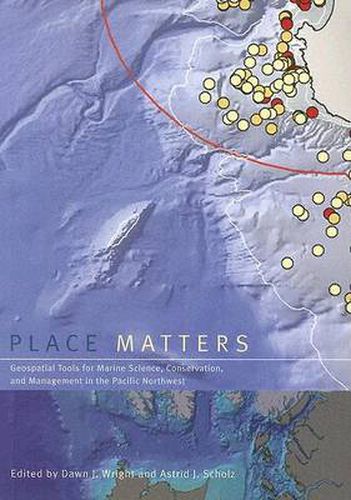Readings Newsletter
Become a Readings Member to make your shopping experience even easier.
Sign in or sign up for free!
You’re not far away from qualifying for FREE standard shipping within Australia
You’ve qualified for FREE standard shipping within Australia
The cart is loading…






Although the ocean provides living space for about 97 percent of life on Earth, less than 5 percent of the ocean below the surface has actually been seen, let alone explored. Now, using the geogrpahic information system (GIS), marine scientists are gaining new insights into a once-mysterious world. A technologically sophisticated database, information-management, and display system, GIS holds tremendous potential for mapping, interpreting, and managing ocean environments– from the seafloor to the seafloor to the shoreline. Place Matters explores how marine GIS is contributing to the understanding, management, and conservation of the shores and ocean of the Pacific Northwest, which is becoming a hotbed of marine GIS development and applications as scientists expand the use of this cutting-edge technology to a variety of ocean science, policy, and management issues. Using these geospatial databases and tools, scientists, resource managers, and conservationists– often in collaboration– are making advances in the way that data are collected, documented, used, shared, and saved. The contributors to Place Matters show how together they are using GIS to hadle and exploit present and future data streams from observatories, experiments, numerical models, simulations, and other sources, yielding fresh insights into oceanographic, ecological, and socioeconomic conditions of the marine environment. The book begins with a conceptual framework, laying out selected methods and models for conservation-based marine GIS. Chapters in the second section describe working examples of marine GIS tools and large-scale implementations. The final section focuses onthe use of GIS by environmntal advocacy andlocal citizens’ organizations. A companion Web site includes GIS maps and databases, as well as extensive Web-based resources. with its unique focus on the use of GIS to solve marine conservation problems, Place Matters offers an important new resources for all who study and work to protect the world’s oceans.
$9.00 standard shipping within Australia
FREE standard shipping within Australia for orders over $100.00
Express & International shipping calculated at checkout
Although the ocean provides living space for about 97 percent of life on Earth, less than 5 percent of the ocean below the surface has actually been seen, let alone explored. Now, using the geogrpahic information system (GIS), marine scientists are gaining new insights into a once-mysterious world. A technologically sophisticated database, information-management, and display system, GIS holds tremendous potential for mapping, interpreting, and managing ocean environments– from the seafloor to the seafloor to the shoreline. Place Matters explores how marine GIS is contributing to the understanding, management, and conservation of the shores and ocean of the Pacific Northwest, which is becoming a hotbed of marine GIS development and applications as scientists expand the use of this cutting-edge technology to a variety of ocean science, policy, and management issues. Using these geospatial databases and tools, scientists, resource managers, and conservationists– often in collaboration– are making advances in the way that data are collected, documented, used, shared, and saved. The contributors to Place Matters show how together they are using GIS to hadle and exploit present and future data streams from observatories, experiments, numerical models, simulations, and other sources, yielding fresh insights into oceanographic, ecological, and socioeconomic conditions of the marine environment. The book begins with a conceptual framework, laying out selected methods and models for conservation-based marine GIS. Chapters in the second section describe working examples of marine GIS tools and large-scale implementations. The final section focuses onthe use of GIS by environmntal advocacy andlocal citizens’ organizations. A companion Web site includes GIS maps and databases, as well as extensive Web-based resources. with its unique focus on the use of GIS to solve marine conservation problems, Place Matters offers an important new resources for all who study and work to protect the world’s oceans.